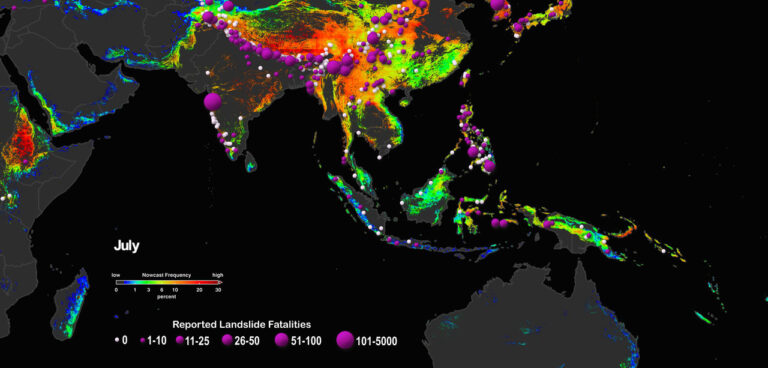An increase in the frequency and intensity of rainfall events as a result of climate change could lead to more landslides in the Himalayas, a new study has found.
The NASA-led study looked at satellite estimates and computer modeling of precipitation data to project the impact of changing rainfall patterns on landslide frequency in the High Mountain Asia region of China, Tibet and Nepal.
The region, which includes the Himalayas, stores more freshwater in its snow and glaciers than anywhere outside the polar regions.
According to the researchers the impact of increased landslides could be severe, especially in areas currently covered by glaciers and glacial lakes where cascading disasters like floods could impact communities hundreds of miles downstream.
The study, a collaboration between scientists from NASA’s Goddard Space Flight Center in Maryland, NOAA and Stanford University, used a NASA model to help estimate landslide risk.
Known as the Landslide Hazard Assessment for Situational Awareness (LHASA), the model assesses risk by first evaluating data on roadways, the proximity of tectonic faults, the geology of the bedrock, change in tree cover and the gradient of slopes. This data is then correlated against current precipitation data to provide a risk assessment.
To test the model, the study team ran NASA precipitation data for the region for the last 20 years and NOAA climate model data dating back to 1982.
These datasets were compared with landslide data for the region from a global database stored by NASA. After finding that LHASA was able to accurately predict past landslides they projected the model into the future – assessing precipitation and landslide trends up until 2100.
They found that the border region between Nepal and China was the most vulnerable, with landslide activity predicted to increase between 30% and 70%.
Stretching tens of thousands of miles from the Himalayas in the east to the Hindu Kush and Tian Shan mountain ranges in the west, High Mountain Asia’s water cycle is changing as Earth heats up.
Changes in the annual monsoon patterns are already having an adverse impact on millions of people in the region. Last summer, for example, monsoon flooding and landslides in Nepal, India and Bangladesh displaced more than seven million people.



